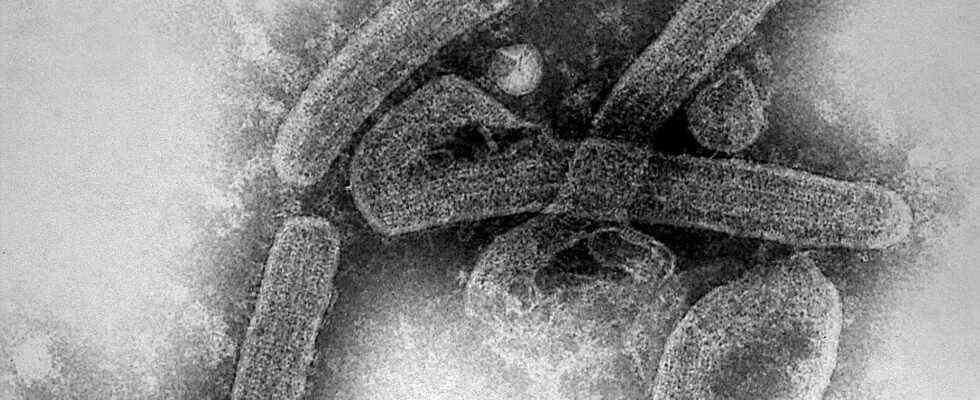background
Status: 10.08.2021 6:43 p.m.
There is an infection with the Marburg virus in Guinea – it is closely related to the Ebola virus and very dangerous. However, an uncontrolled global spread is considered unlikely.
The Marburg virus actually occurs mainly in Africa. But it was described for the first time in Germany: In 1967 the virus broke out in Marburg – at the time it was probably brought in by monkeys who were brought to Germany for the production of vaccines.
Since then there have been two major outbreaks of the Marburg virus: in 1998 in the Congo and in 2004 in Angola, several hundred people died in total. The virus is highly contagious and, depending on the variant, very dangerous. According to the World Health Organization, 24 to 90 percent of those infected die from the disease.
Contagion through wild animals and body fluids
The Marburg virus is transmitted in two ways: On the one hand, in close contact with wild animals that carry the virus, for example by eating monkeys or flying foxes. However, the virus can also spread from person to person. This happens primarily through direct contact with the body fluids of an infected person, for example through their blood or saliva.
The greatest risk of infection therefore arises when there are insufficient hygiene precautions to be taken when caring for infected people. In addition, the virus can be transmitted through close contact with the deceased, for example during ritual washing.
No outbreak yet
In Guinea it was already known that the Marburg virus occurs in wild animals. The case that has now become known, however, is the first case in the region in which the virus was detected in a person. There is no evidence of direct contact with a wild animal, says Jonas Schmidt-Chanasit from the Bernhard Nocht Institute for Tropical Medicine in Hamburg.
“But it seems reasonable to assume that there was first a transmission through close contact with wild animals such as fruit bats or monkeys. After that, the virus can then be transmitted from person to person,” explains Schmidt-Chanasit. One could not speak of an outbreak due to a single case. “However, immediate measures are necessary to prevent further spread. For this, contact persons must be identified and observed and a PCR diagnosis must be carried out at an early stage.”
Symptoms often ambiguous
The problem: Anyone who catches the Marburg virus often initially develops symptoms that also match many other diseases. These include, for example, abdominal pain, fever and fatigue. The closely related Ebola viruses also lead to these complaints.
In the further course of the disease, severe bleeding occurs in severe cases, and it is not uncommon for infected people to die of so-called Marburg fever. There is no specific therapy for the disease. However, there is an option to treat symptoms if the infection is detected early.
Danger high in Guinea
The WHO estimates the risk of an epidemic in Guinea due to the highly contagious virus as high. However, the risk that the virus could spread around the world as a result is low.
Schmidt-Chanasit also sees it this way: “This is a mostly serious disease that rarely goes undetected.” As a rule, people feel so bad that they stay at home. “In this respect, it is fundamentally different from the new corona virus, for example.”
Marburg virus confirmed in West Africa
Sebastian Felser, ARD Rabat, August 10th, 2021 12:58 p.m.

